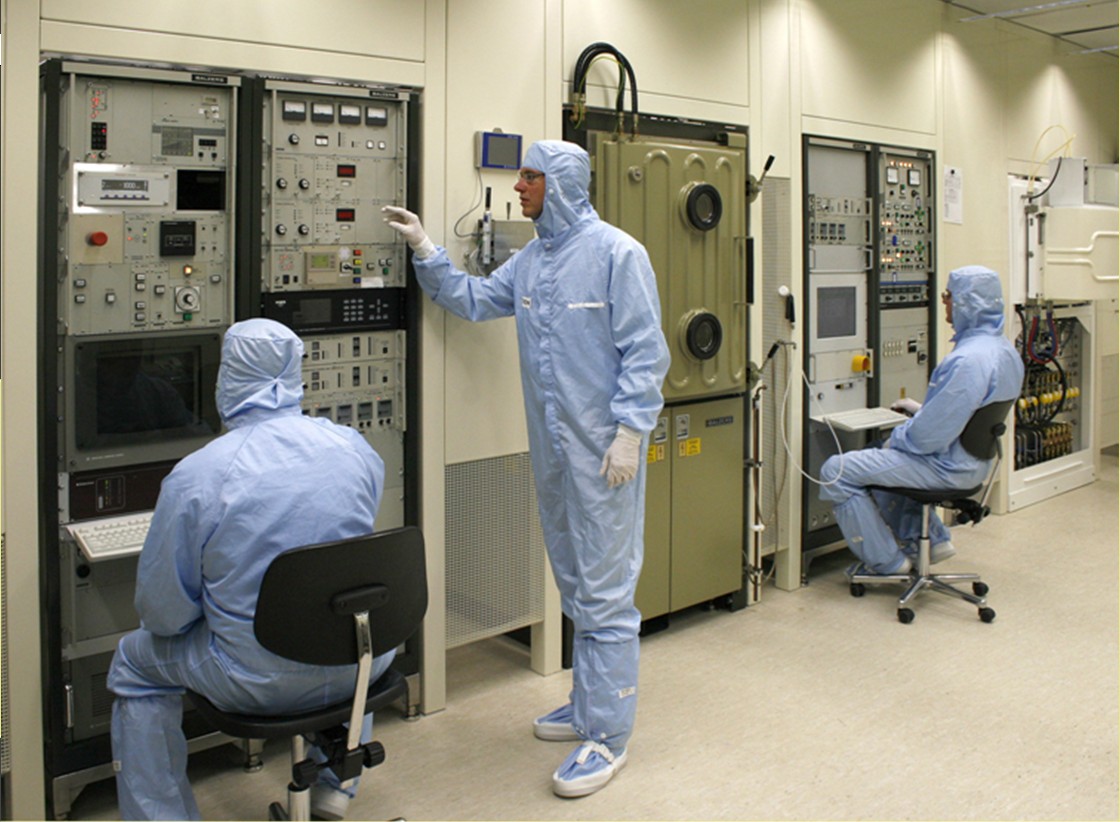
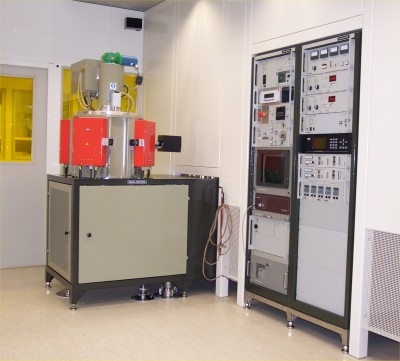
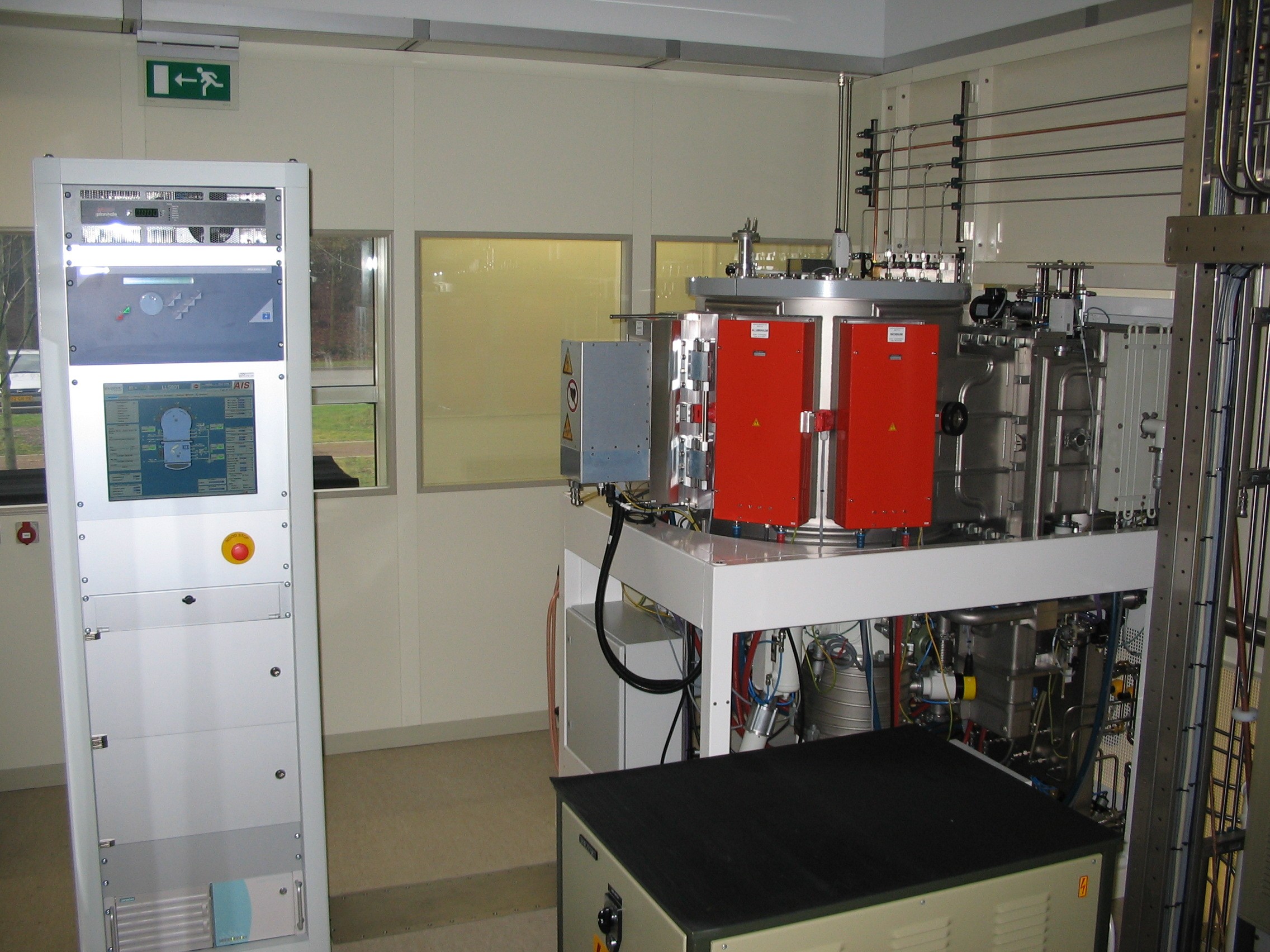
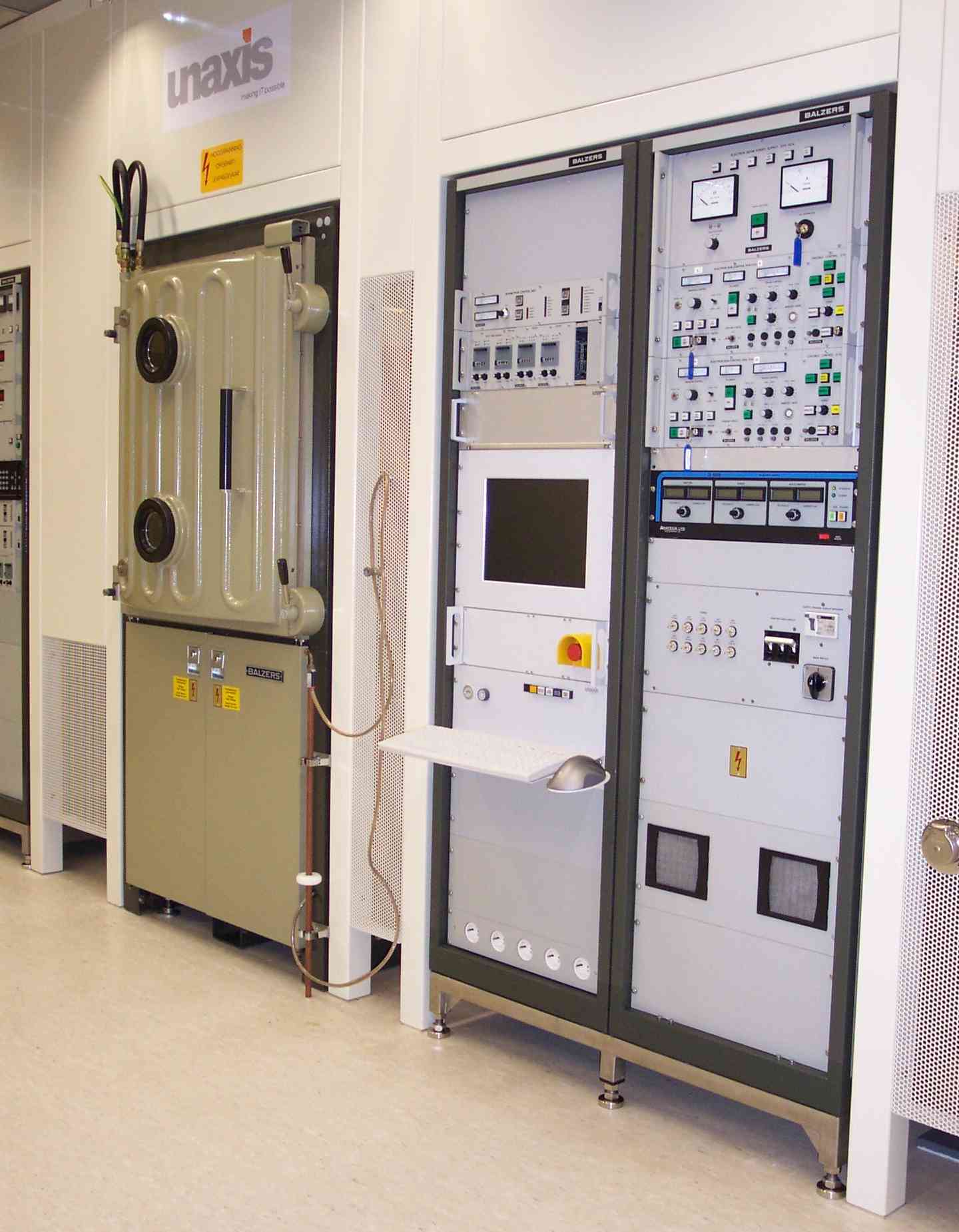
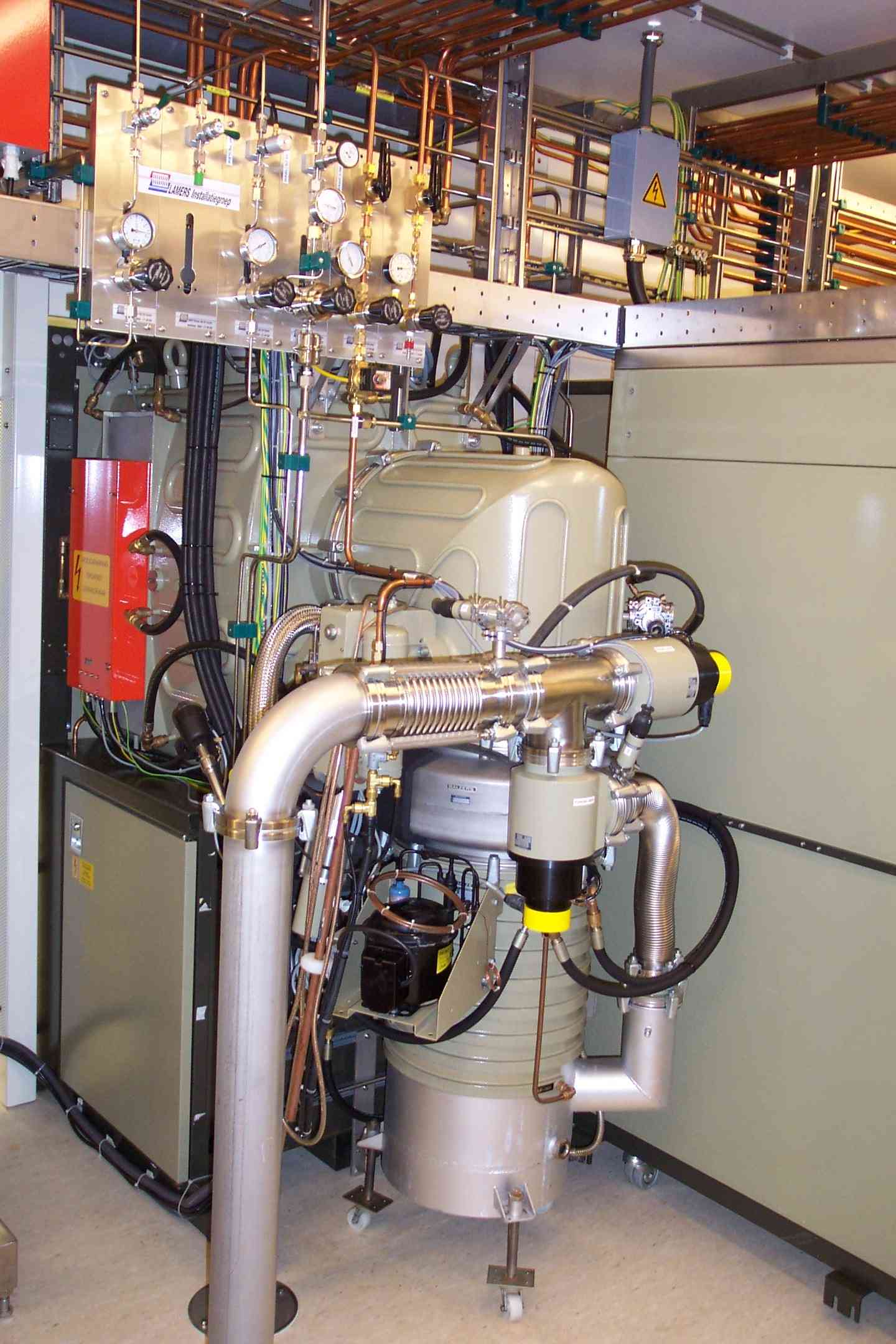
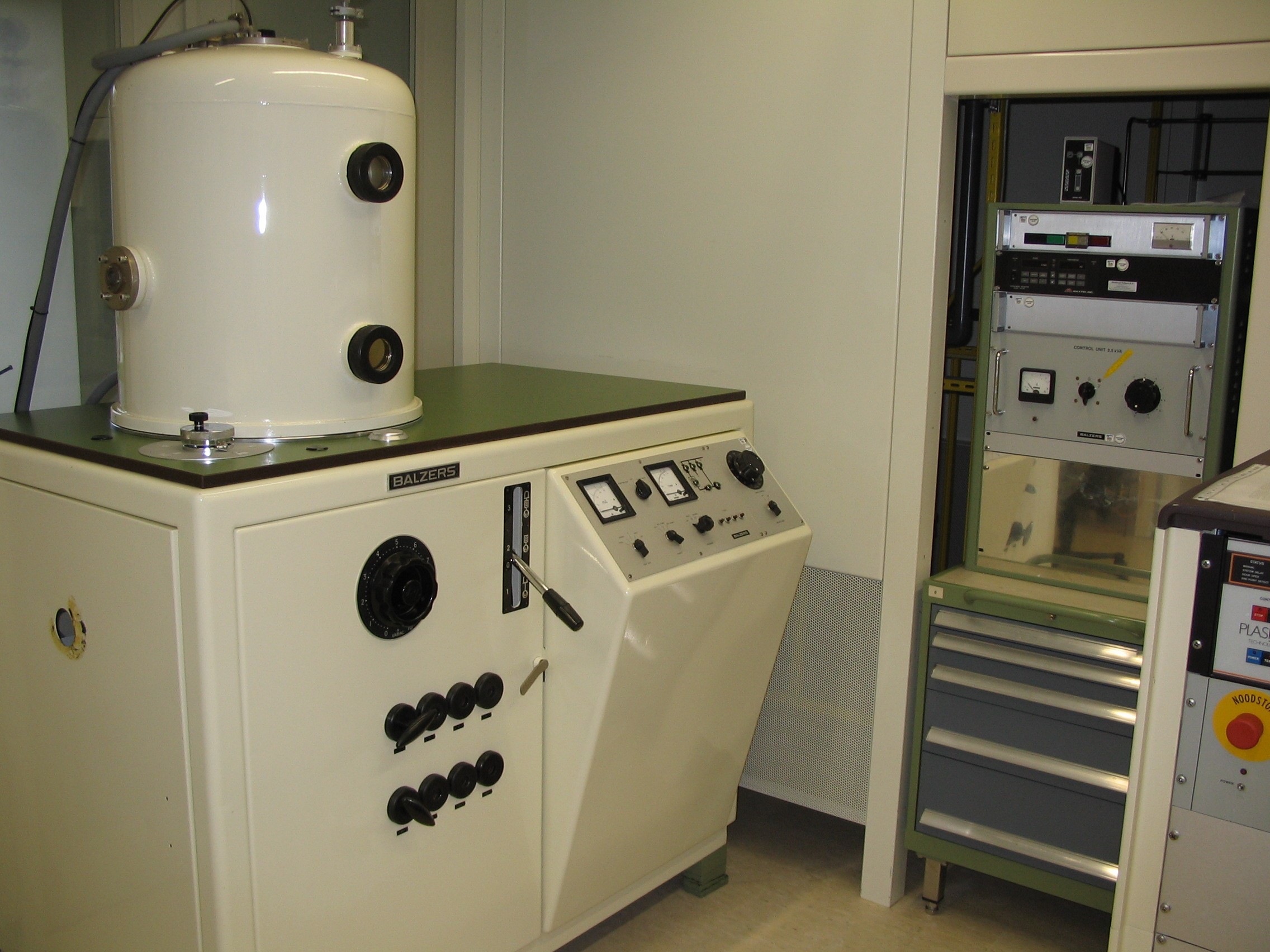
Introduction
Thin-film deposition facilities are the key elements for high quality radiation sensor development. The quality of the layers and interfaces between layers determine the ultimate sensitivity of the sensor and the reproducibility of fabrication.
In our clean room we have deposition facilities for (superconducting) metals and some insulators. Three techniques are used:
- Magnetron sputter deposition
- Electron Beam evaporation, combined with ion bombardment
- Thermal evaporation
Magnetron sputter deposition
Sputter deposition is a technique where material from a target plate is removed by bombardment with Ar ions, which are formed in a low pressure plasma. The typical operating pressure is 10 mTorr. Before deposition, the system can be pumped to about 1 x 10-7 Torr.
The first system, a Balzers BAS 450, is equipped with 3 rectangular magnetron sources (12.5 x 25 cm). One station is reserved for sputter cleaning of the substrates. The substrates are mounted vertically on a stepping motor driven rotating holder. Two sources can be turned on at the same time, enabling deposition of multilayers. The substrate holder can be heated with a quartzlamp from the inside. At the moment we have targets for Al, Bi, Ta, Nb, Mo, W, Ti and Cu.
The second system is an upgraded Evatec LLS 801 system, equipped with 4 rectangular DC- magnetron sources (12.5 x 42.5 cm) and one RF-magnetron source, enabling coating of insulating materials. The machine has a load-lock with RF cleaning for fast turn-around times, and is fully computer controled. Materials available are Al, AlCu, Cu, Mo, Nb, Ti, Ta, NiCr, SiO2 and Al2O3.
E-beam evaporation
E-beam evaporation is done using a Balzers BAK 640 system. Again, the base pressure is around 1 x 10-7 Torr, the machine is diffusion pumped. Here evaporation materials in water cooled crucibles are heated by a highpower (10 kW) electron beam. Two of these e-beam sources are mounted, each with 4 crucibles, enabling 8 different materials to be coated in one vacuum run. Because of the high power also high melting point materials like tungsten and carbon can be evaporated.
The machine has been upgraded with a Kahn deposition controller. The whole process, from pumpdown, through pre-cleaning to deposition of multiple layers, can be done fully automatic (and reproducible). Data of the process is logged. Using the two sources and shutters, the interfaces between two layers can be kept virtually free from contamination.
The machine is also equipped with a 10 cm Ø Ion Gun. This can be used for pre-cleaning, even etching of oxides, and for ion-assisted deposition. The latter can be used for altering the properties of the coating. The substrateholder can be heated up to 600 °C.
Thermal evaporation
The thermal evaporator is a Balzers BA 510 system. The base vacuum, obtained by liquid nitrogen baffled diffusionpumping, is 1 x 10-7 Torr. High melting temperature boats (W, Mo, Ta, C) are heated by conducting a large current (up to 800 A at 4 V) through them. Material in the boat is evaporated and condenses on the rotating substrateholder. This holder can be heated to about 300 °C to improve the properties of the coating.
Deposited thickness is measured with a quartz-crystal controller. Layers from a few nm up to about 1 µm can bedeposited. Before deposition a low pressure glow discharge can be applied for improvement of the adhesion of thecoating.
The machine is mainly used for deposition of SiO (insulator) and thick layers of Sn. These processes are unwanted in the e-beam deposition facility.
All deposition machines are connected to a central cooling/heating water system. The systems are heated to 50 °C before opening to prevent condensation of water vapor. In this way the pumpingtime to high vacuum is reduced appreciably.


